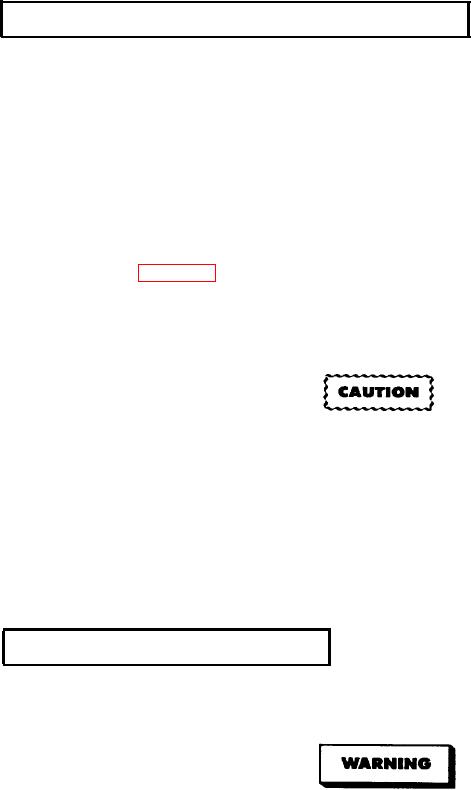
TM 5-3895-369-14
2-23. OPERATION IN EXTREME COLD (CONT).
(f)
Steer away from ruts and snow banks.
(g) Steer vehicle straight up and down hills when possible.
b.ShutDown.
NOTE
Freezing water in additive system or fuel lines can cause damage to pump, hose and fuel lines. Water
must be removed from these areas before storing the vehicle when temperatures are forecast to drop
below freezing; 32F (0C).
(1) If water was pumped through additive system, flush out pump, hoses, and spray bar with fuel oil
(item 30, appendix E).
(2) Ensure that no water remains in pump or hoses.
(3) Open additive elbow drain valve behind left rear wheel.
During periods of extreme cold, damage will occur if tires are allowed to freeze to the ground. If a
sheltered area is not available when temperatures are forecast to be below 32F (0C), the vehicle should
be parked in a high, dry area. If a high, dry area is not available, the vehicle should be raised off the
ground and parked on wooden planks to prevent tires from freezing to the ground.
(4) Park vehicle in sheltered area out of wind. If a sheltered area is not available, park vehicle so it does not
face into wind.
(5) Drain water from fuel/water separator.
(6) If temperatures are forecast to reach -50F (-46C), increase tire pressure by approximately 10 psi (69 kPa).
2-24. FORDING OR SWIMMING.
a. Introduction. This paragraph provides instructions for driving the vehicle through water and across streams.
b. Fording Instructions.
Water depth greater than 3.0 ft (0.9 m) can cause personal injury and/or damage to the vehicle. The
vehicle should not enter water deeper than 3.0 ft (0.9 m).
(1) Make sure depth of water at fording site is not more than 3.0 ft (0.9 m).
(2) Make sure that bottom of fording site is firm enough that 3.0 ft (0.9 m) maximum fording depth will not be
exceeded and vehicle will not become stuck.
(3) Stop vehicle at edge of water.
2-52

